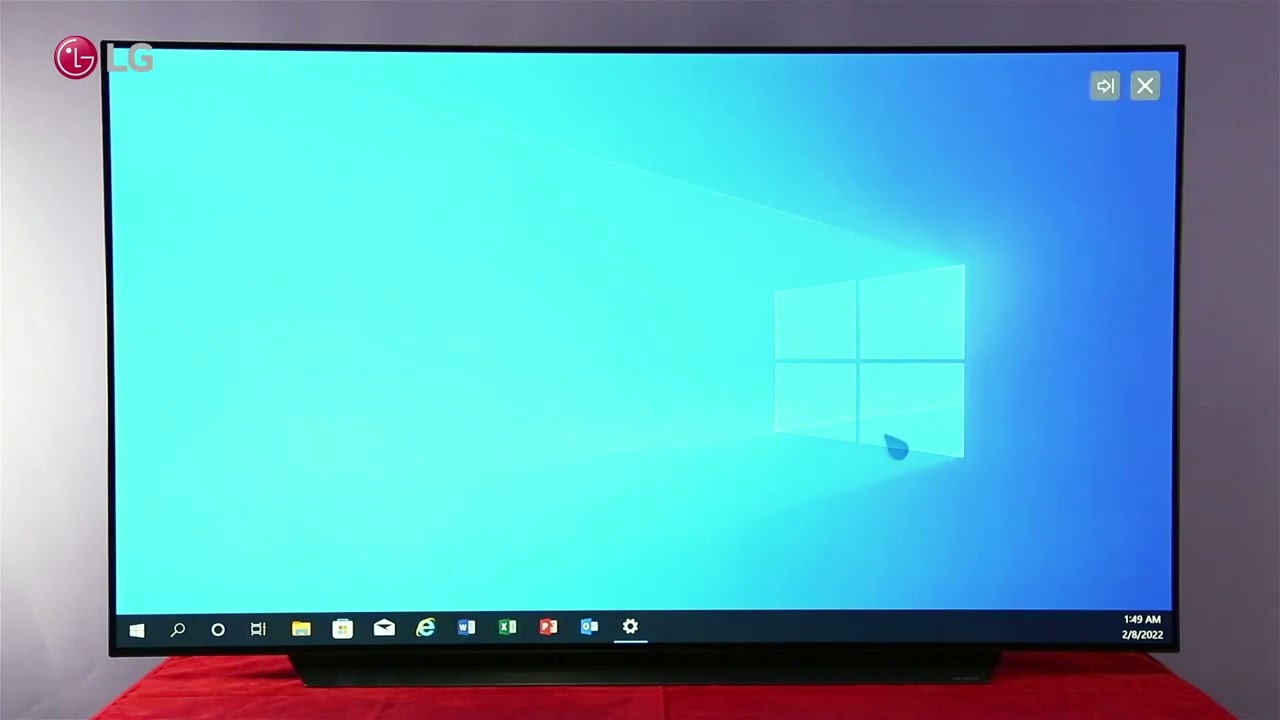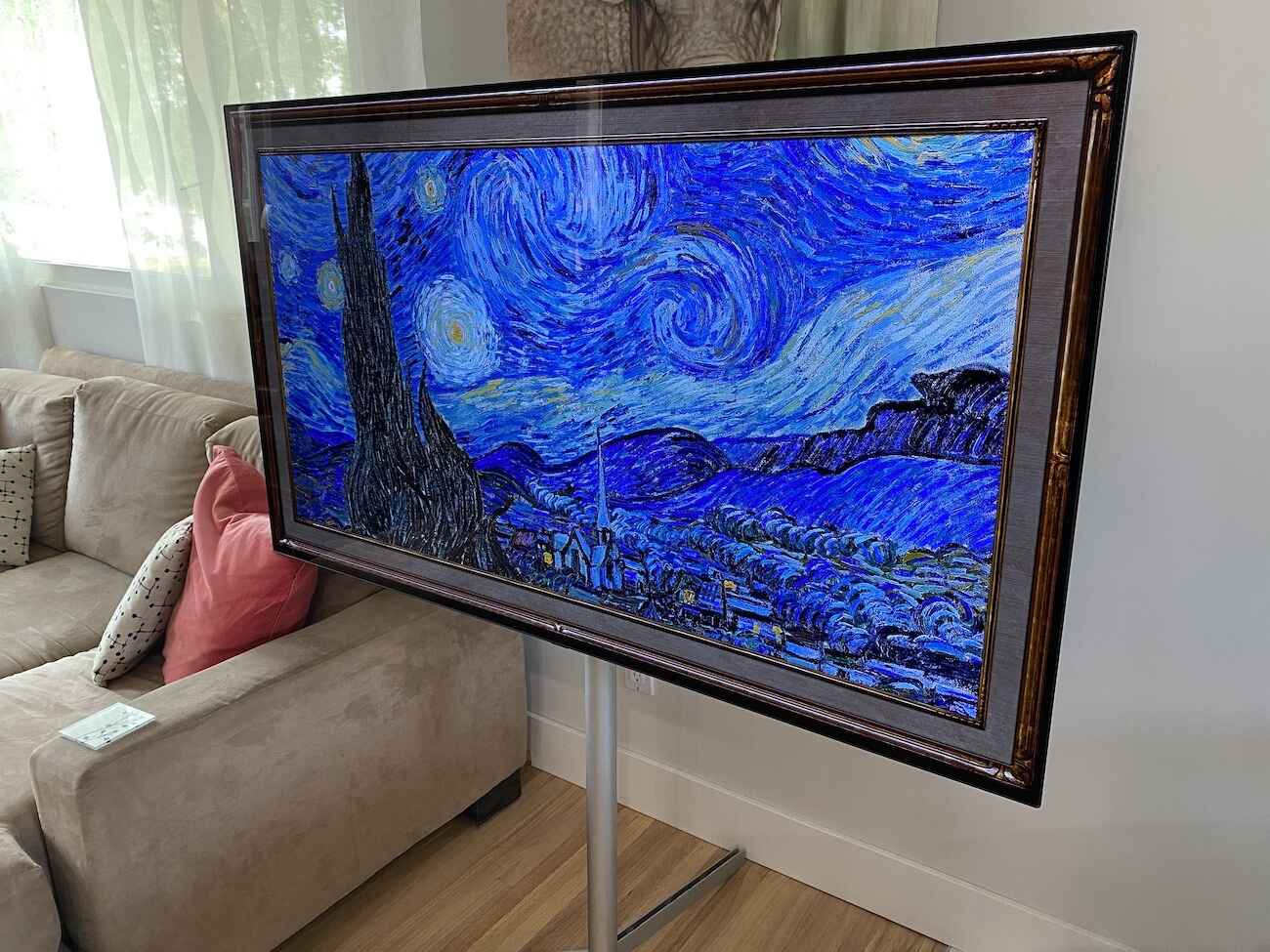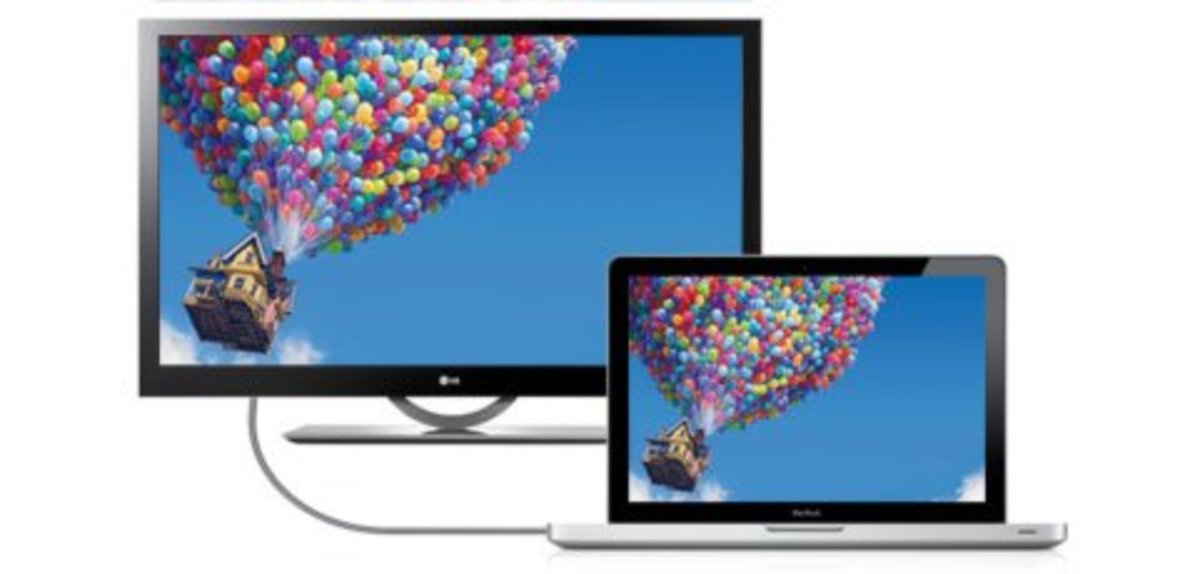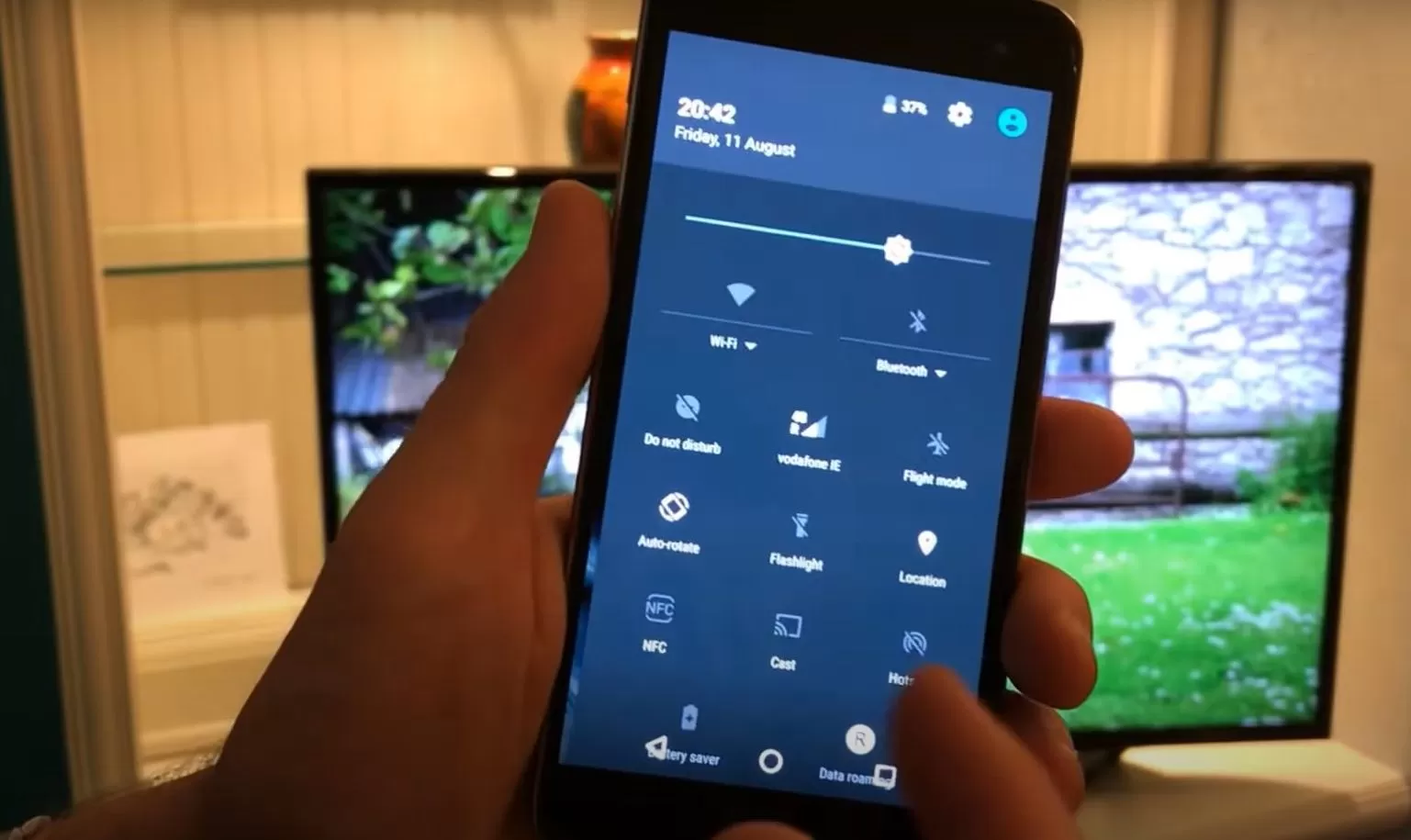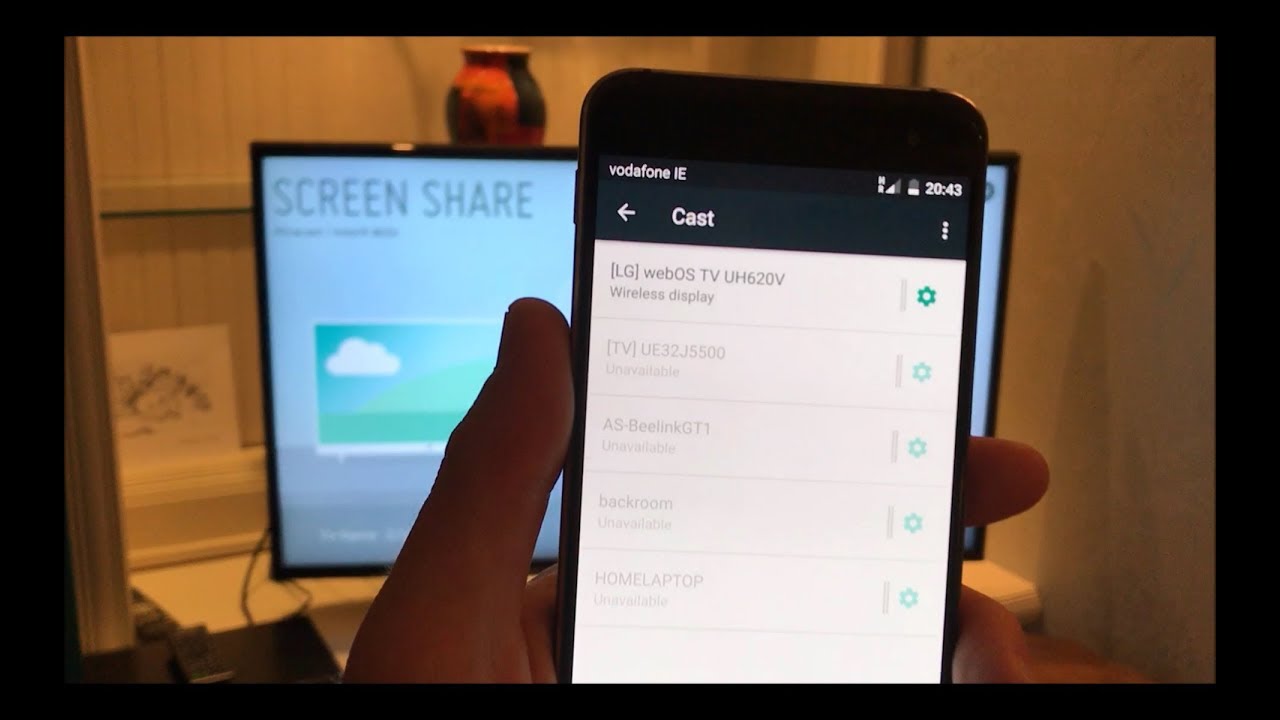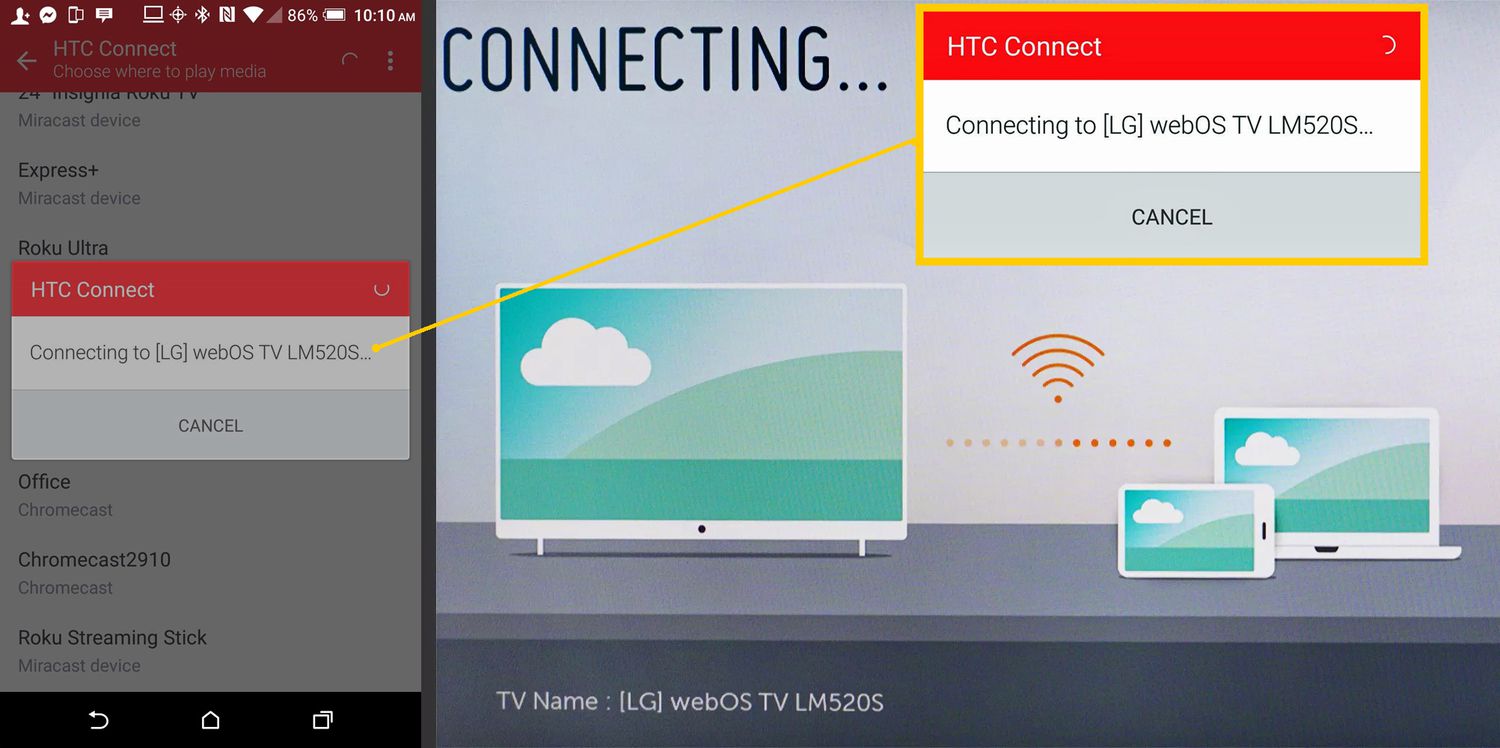Introduction
Welcome to the guide on how to share your computer screen to an LG OLED TV! This feature allows you to effortlessly display your computer’s content, such as videos, photos, presentations, and more, on your LG OLED TV’s larger and vibrant screen. Whether you want to stream your favorite movies, play games, or showcase your work for a gathering, this step-by-step tutorial will help you get started.
Sharing your computer screen on your LG OLED TV can be a seamless process when you have the right tools and connections in place. In this guide, we will walk you through the necessary steps to ensure successful screen sharing. From confirming that both your computer and LG OLED TV support screen sharing to adjusting the screen resolution and display settings, we will cover everything you need to know.
Sharing your computer screen not only enhances your viewing experience but also allows you to take advantage of the LG OLED TV’s exceptional image quality and immersive display. Get ready to explore the world of limitless entertainment and productivity as you seamlessly connect your computer to your LG OLED TV.
So, grab your computer, make sure your LG OLED TV is ready, and let’s dive into the step-by-step process of sharing your computer screen to an LG OLED TV. Follow each step carefully, and in no time, you’ll be enjoying your favorite media and content on the big screen from the comfort of your living room or workspace.
Step 1: Ensure both your computer and LG OLED TV support screen sharing
Before you proceed with screen sharing, it is essential to confirm that both your computer and LG OLED TV are compatible with this feature.
Firstly, ensure that your computer has the necessary hardware and software capabilities. Most modern computers come equipped with built-in screen sharing functionality, such as Miracast or AirPlay, which makes the process seamless. However, if your computer does not have this functionality, you can still enable screen sharing through the use of third-party software or hardware connections.
On the other hand, check if your LG OLED TV supports screen sharing. LG OLED TVs are equipped with a range of connectivity options, including Miracast, Wi-Fi Direct, and AirPlay 2. These technologies allow you to connect and mirror your computer’s screen with ease.
If you are unsure whether your computer or LG OLED TV supports screen sharing, refer to their respective user manuals or visit the manufacturer’s website. These resources will provide detailed information on the supported connectivity options and the steps to enable screen sharing.
Remember, using compatible devices will ensure a seamless and hassle-free screen sharing experience. Once you have confirmed that both your computer and LG OLED TV support screen sharing, you can proceed to the next step.
Step 2: Connect your computer and LG OLED TV to the same Wi-Fi network
To successfully share your computer screen to your LG OLED TV, it is crucial that both devices are connected to the same Wi-Fi network. This allows for seamless communication and eliminates any potential connectivity issues.
Here’s how you can connect your computer and LG OLED TV to the same Wi-Fi network:
- Ensure that both your computer and LG OLED TV are powered on and within range of your Wi-Fi router.
- On your computer, navigate to the Wi-Fi settings and select your home Wi-Fi network from the list of available networks.
- Enter the required password to access the Wi-Fi network, if prompted. Once the connection is established, your computer will be connected to the Wi-Fi network.
- On your LG OLED TV, access the settings menu and navigate to the network settings.
- Select the Wi-Fi option and choose your home Wi-Fi network.
- Enter the Wi-Fi password, if prompted, to establish a connection between your LG OLED TV and the Wi-Fi network.
- Once both devices are connected to the same Wi-Fi network, they are ready for screen sharing.
It is important to note that connecting both your computer and LG OLED TV to the same Wi-Fi network ensures a stable and reliable connection. This step enables the devices to communicate seamlessly, allowing you to easily share your computer screen on your LG OLED TV.
With your computer and LG OLED TV now connected to the same Wi-Fi network, you are one step closer to experiencing the joy of screen sharing. Let’s move on to the next step and enable screen sharing on your LG OLED TV.
Step 3: Enable screen sharing on your LG OLED TV
Now that your computer and LG OLED TV are connected to the same Wi-Fi network, it’s time to enable screen sharing on your LG OLED TV. Enabling screen sharing will allow your computer to mirror its screen onto the TV, providing you with a larger display and an immersive viewing experience.
To enable screen sharing on your LG OLED TV, follow these steps:
- Turn on your LG OLED TV and use the remote control to navigate to the settings menu.
- From the settings menu, locate and select the “Network” or “Connectivity” option.
- Within the Network or Connectivity menu, look for the “Screen Share” or “Mirroring” option. The terminology may vary depending on your LG OLED TV model.
- Select the “Screen Share” or “Mirroring” option to access the screen sharing settings.
- Within the screen sharing settings, ensure that the feature is enabled. If it is not enabled by default, toggle the switch to turn it on.
Once you have enabled screen sharing on your LG OLED TV, it is now ready to receive and display the content from your computer. Keep in mind that the exact steps and terminology may vary slightly depending on the model and firmware version of your LG OLED TV. Consult your TV’s manual or the manufacturer’s website for specific instructions if needed.
With screen sharing enabled on your LG OLED TV, you are just one step away from connecting your computer and starting the screen sharing process. In the next step, we will enable screen sharing on your computer to establish the connection between the devices.
Step 4: Enable screen sharing on your computer
Now that screen sharing is enabled on your LG OLED TV, it’s time to enable screen sharing on your computer. By doing so, you will establish a connection between your computer and LG OLED TV, allowing you to mirror your computer’s screen on the TV.
The process of enabling screen sharing on your computer may vary depending on the operating system you are using. Here are the general steps for enabling screen sharing on Windows and macOS:
Windows:
- Open the “Settings” menu on your Windows computer.
- Select the “System” option.
- From the left sidebar, choose “Projecting to this PC” or “Display”.
- Under the “Multiple displays” section, select the option that best fits your needs:
- “PC screen only” – Screen sharing is disabled
- “Duplicate” – Mirrors your computer screen on the LG OLED TV
- “Extend” – Extends your computer screen to the LG OLED TV as a second display
- “Second screen only” – Turns off your computer screen and displays on the LG OLED TV only
- Choose the desired option for screen sharing on your LG OLED TV.
macOS:
- Click on the Apple menu and select “System Preferences”.
- Choose “Displays”.
- Click on the “Arrangement” tab.
- Check the box labeled “Mirror Displays” to enable screen sharing.
After enabling screen sharing on your computer, it is now ready to connect to your LG OLED TV. The process may slightly differ based on your specific device and operating system version. Refer to your computer’s manual or operating system documentation for detailed instructions if needed.
With screen sharing enabled on both your LG OLED TV and computer, you are ready to establish the connection between the devices and start sharing your computer’s screen on your LG OLED TV. Let’s move on to the next step for connecting your computer to your LG OLED TV.
Step 5: Connect your computer to your LG OLED TV
Now that screen sharing is enabled on both your computer and LG OLED TV, it’s time to establish the connection between the devices. By connecting your computer to your LG OLED TV, you will be able to display your computer’s screen on the TV in real-time.
To connect your computer to your LG OLED TV, follow these steps:
- On your computer, locate the screen sharing or casting icon. This may vary depending on your operating system and setup.
- Click on the screen sharing or casting icon to view the available devices for screen sharing.
- From the list of available devices, select your LG OLED TV. It should be listed with the model name or a recognizable identifier.
- Once you have selected your LG OLED TV, your computer will attempt to establish a connection. This process may take a few moments.
- If prompted, enter any necessary access codes or PINs to establish the connection. This step adds an extra layer of security.
- Once the connection is successfully established, your computer’s screen will start to mirror on your LG OLED TV.
During the mirroring process, you will see an exact replica of your computer’s screen on your LG OLED TV. Any actions, such as opening applications, playing videos, or browsing the web, will be displayed on the TV in real-time.
It’s important to note that some devices may require additional steps or software for the initial connection setup. Ensure that you follow any specific instructions provided by the manufacturer or consult the user manual for further guidance.
With your computer now connected to your LG OLED TV, you are ready to explore the world of larger-than-life entertainment, productive work sessions, and captivating multimedia experiences. Enjoy the seamless screen sharing capabilities and make the most of your LG OLED TV’s stunning display.
Step 6: Adjust the screen resolution and display settings
After connecting your computer to your LG OLED TV and mirroring your screen, you may need to adjust the screen resolution and display settings to optimize the viewing experience. Fine-tuning these settings ensures that the content on your computer is displayed correctly on the larger screen of the TV.
Here’s how you can adjust the screen resolution and display settings:
- On your computer, right-click on the desktop and select “Display settings” or “Screen resolution” from the context menu. Alternatively, you can access these settings through the control panel or system preferences.
- In the display settings, you’ll see a list of available resolutions. Select the resolution that best matches your LG OLED TV’s native resolution for optimal image quality.
- Additionally, you can adjust other display settings, such as brightness, contrast, and color calibration, to enhance the visual experience. Experiment with these settings to find the configuration that works best for you.
- Once you have made the necessary adjustments, click “Apply” or “OK” to save the changes.
Adjusting the screen resolution and display settings ensures that the content on your computer is displayed accurately and proportionally on your LG OLED TV. It eliminates any potential issues like mismatched aspect ratios, blurry text, or distorted visuals.
Keep in mind that the process of adjusting display settings may vary depending on your operating system and graphics card. Refer to the documentation provided with your computer or visit the manufacturer’s website for more detailed instructions specific to your setup.
By fine-tuning the screen resolution and display settings, you can fully enjoy the immersive experience of sharing your computer screen on your LG OLED TV. So, make the necessary adjustments and get ready to indulge in an enhanced visual journey.
Step 7: Start sharing your computer screen on your LG OLED TV
Congratulations! You have successfully connected and adjusted the settings for screen sharing between your computer and LG OLED TV. Now, it’s time to start sharing your computer screen and enjoy the larger display on your TV.
Here’s how you can start sharing your computer screen on your LG OLED TV:
- Ensure that both your computer and LG OLED TV are turned on and connected to the same Wi-Fi network.
- Verify that screen sharing is enabled on both devices.
- On your computer, navigate to the screen sharing or casting icon, which could be located in the system tray or taskbar.
- Click on the screen sharing or casting icon to open the selection menu of available devices.
- Select your LG OLED TV from the list of available devices.
- Your computer will start connecting to your LG OLED TV. Once the connection is established, your computer screen will be mirrored on the TV.
- You can now seamlessly navigate through your computer’s applications, media files, or web pages, and the content will be displayed in real-time on your LG OLED TV.
Whether you want to stream videos, play games, deliver presentations, or simply enjoy a larger viewing experience, screen sharing on your LG OLED TV provides limitless possibilities. The stunning display and vibrant colors of the TV will enhance your visual experience and make every moment more captivating.
Keep in mind that the exact steps and options for screen sharing may vary depending on your computer’s operating system and the screen sharing software or technology you are using. Consult the user manual or online resources specific to your system for more accurate instructions if needed.
Now, sit back, relax, and immerse yourself in the larger-than-life experience as you share your computer screen on your LG OLED TV. Explore all the exciting possibilities and enjoy the convenience and versatility of screen sharing.
Conclusion
Sharing your computer screen to your LG OLED TV opens up a whole new world of entertainment, productivity, and immersive experiences. Through the step-by-step process outlined in this guide, you can easily connect your computer to your LG OLED TV and mirror your screen, providing a larger and more captivating viewing experience.
By ensuring that both your computer and LG OLED TV support screen sharing and connecting them to the same Wi-Fi network, you establish the foundation for a successful screen sharing connection. Enabling screen sharing on both devices and adjusting the screen resolution and display settings help optimize the visual experience, ensuring accurate and vibrant content display.
Once you have completed these steps, you can seamlessly connect your computer to your LG OLED TV and begin sharing your computer screen in real-time. Enjoy streaming your favorite movies and videos, playing games, showcasing presentations, or simply browsing the web on a bigger, more immersive display.
Remember, the specific steps and options for screen sharing may vary depending on the operating system and technology you are using. Consult the user manuals and online resources for your specific devices for more accurate instructions.
Now that you have mastered the art of sharing your computer screen to your LG OLED TV, go ahead and explore the endless possibilities that this feature offers. Whether for work or leisure, indulge in the convenience and enjoyment of a larger screen as you share your computer’s content effortlessly on your LG OLED TV.
So, grab your popcorn, fire up your computer, and let the screen sharing adventure begin!







